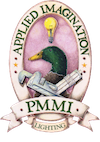Daylight Harvesting is a technique that makes use of daylight to offset the amount of energy needed to light a space. The concept involves the use of automated lighting control to reduce “powered” light output as daylight encroaches into the space through windows, skylights, etc. A light level sensor is used to measure the prevailing light level or luminance in the space, and the lighting control system adjusts the light output so that the target luminance is maintained.
Because of the energy savings potential, international and domestic building codes and standards are now addressing daylight harvesting. These include IECC, ASHRAE, and Title 24 of the California Building Energy Efficiency Standards. Daylight harvesting offers energy savings opportunities in both commercial and residential applications. Typical recommended luminance for commercial lighting applications range from 50-100 LUX for halls and stairways, to over 1000 LUX for detailed work environments. The ProLight Series Systems provides DH control over this entire range and more.
Up to 16 Areas (zones) can be designated as “Daylight Harvesting Areas”. For each designated Area, the target luminance is set by adjusting a variable resistor (pot) at the control center. This adjustment is typically made only once. Designated areas can then be activated or deactivated using wall switches, motion detectors, scenes, events, or through mobile apps and Alexa. When a DH area is “active”, target luminance is continuously maintained in the area. Light-level adjustments are subtle in nature so as to maintain a comfortable environment, but fast enough to make near real-time adjustments. When a DH area is deactivated, all associated lights are turned off. It’s also possible to associate the same light channels with both a DH area and a conventional area so that the space can be maintained both daylight-harvesting control or conventional dimmers, toggles, etc.

